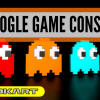Inside: Are those lady parts? – a review [VIDEO]
Welcome to The One Thing, a video game review series that does something a bit different. Rather than try to touch on all the features that make a game great, I attempt to distill a game down to a single element that I believe is integral to the experience of the game. This may not be the only thing that makes a game great, but if someone asked me to tell them why INSIDE works, I’d start with The One Thing.
And what is The One Thing? It’s the…well, I don’t want this video to be censored because I mention anatomically appropriate body parts, so let’s just say, it’s the lady parts.
Let me back up for a moment.
Video games are inherently a perfect medium for the storytelling technique known as in medias res, which literally translates as “in the middle of things.” The idea is that you can begin a story in the middle of a scene, and that fundamental storytelling elements such as exposition and scene-setting can be bypassed, and instead these details would be revealed as the narrative progresses. It would be the difference between starting the fairy tale Cinderella with “once upon a time…” vs. opening with the evil stepmother in the middle of yelling at Cinderella. Film noir movies often use in medias res. Law & Order, and it’s many spin-offs have used in media res as a series defining stylistic choice for years (bum bum). Shit, did someone just get murdered?
With video games in medias res often serves to jump-start the sense of exploration that’s already central to video games as a medium. It’s a natural fit. But in medias res can be dangerous. A viewer, a reader, a video game player will only be on board as long as the promise of progression exists. Starting in the middle of things removes the narrative support that more controlled character development and scene setting can offer.
So back to Inside. Inside begins in medias res, so the player is primed to hunt for contextual clues about the narrative. Then comes the stealth element which eases the player into accepting the game’s mystery. And the game developers (Playdead) are smart storytellers because they put us in the body of a child, the implication being that children by nature are innocent, so the world by default is mysterious. Playdead used a similar strategy with their previous game, Limbo. Also an amazing game.
So we, as players, adopt that innocence and immediately being asking questions. Why are we hiding? Who are those guys trying to kill us? Why are these chicks following me? What’s up with those weird vapid people? We’re kept invested not only by these questions but also by the game’s design. The stealth elements transition to swimming, then to puzzles, then new enemy types, then more swimming but with a literal twist (the water is upside down…it’s a literal twist), and then, surprisingly–but not necessarily unexpectedly–you become a blob with a mechanic set that’s entirely different from your child character mechanic set.
Inside is fun and it’s beautiful. But most importantly, Inside is brilliantly paced, which is something in medias res narratives sometimes have trouble with. All of these things mean we as players remain invested in the experience.
As a player you are 100% on board with the mysterious narrative every step of the way. This is great, but when The One Thing reveals itself, that’s when the game does something really special. The game stops being mysterious and suddenly becomes…logical. The game makes you feel smart in a new way. When I recognized the use of in medias res, I recognized my own intelligence. When I recognized the use of a child protagonist to compliment the stealth and mystery elements, I again recognized my own intelligence. But when I recognized the vagina, I recognized the game developer’s intelligence, and by proxy, their insistence on making me, the player, feel smart. Making a player feel smart without dumbing down the experience is not easy to do.
I believe the vagina was intentionally placed by the game designers as a way to put the analytical crowd at ease. “Hey player,” the developer is saying “you don’t need to think anymore. We’re telling you right now that we’ve used the human body, specifically the reproductive experience, as a blueprint to inform the level design of a 2D platformer set inside a very mechanical factory-like environment. Okay. From here on, just play.” In a world comprised of hard-edged mechanical surfaces, the soft folds of a vagina stand out. And the developers knew it would.
But is Inside really that simple?
The Internet is rife with theories attempting to de-tangle the game’s theme, trying to organize the logic of the industrial and organic motifs into a single, digestible intent. Some say the game explores how cancer affects a body. Some say it comments on depression with areas where you’re essentially shutting down serotonin receptors. And while, at first, I was eager to jump into that analytical crowd, seeing the vagina near the end of the game, caused me to step back. I found a piece of the puzzle, but importantly not a hidden piece.
Again, the vagina tells the player to stop thinking. This directive to stop thinking is supported by the turn from a puzzle game to a game of simple fun now that you’re playing this amorphous blob, which I mentioned earlier. You get to literally destroy parts of the level, giving you a sense of catharsis against all of the obstructions you’ve carefully navigated up to that point. You don’t have to think anymore. Now you’re just supposed to have fun.
You even use fire at one point late in the game. Fire is a very typical no-need-to-think game mechanic, the type of common element that Inside had consciously avoided during the entire game prior.
Is Inside trying for a specific message, something about herd mentality and office work, as many of the prevailing themes discussed online would indicate? I don’t think so. I don’t believe the developers are hiding a deep message. I think they just wanted to make a cool puzzle platformer and they used the body as a blueprint.
Let me know in the comments below what you think of Inside. What do you think it means? Did you notice the vagina, too, or is it all in my head?
And please, if you like this The One Thing approach to video game reviews, let me know. When I get a thumbs up or comment notification on my phone, I seriously get giddy.
Oh, and one last thing before I go. If you ever find yourself constructing a narrative and you decide to start your story in medias res, just promise me you’ll do so carefully, and that you won’t do it just to be clever…oh crap, that reminds me, Welcome to The One Thing, a video game review series that does something a bit different. Rather than try to touch on all the features that make a game great, I attempt to distill a game down to a single element that I believe is integral to the experience of the game. This may not be the only thing that makes a game great, but if someone asked me to tell them why INSIDE works, I’d start with The One Thing.
Research/Sources/Credits/Inspirations (this is not a comprehensive list, as that would be impossible, especially the “inspirations” items)
- Official Playdead website: http://playdead.com/
- Public Domain, https://commons.wikimedia.org/w/index.php?curid=6199819
- By Vascer – Own work, Public Domain, https://commons.wikimedia.org/w/index.php?curid=11310389
Music Credits
- Rhinoceros Kevin MacLeod (incompetech.com), Licensed under Creative Commons: By Attribution 3.0 License, http://creativecommons.org/licenses/by/3.0/
- Overworld Kevin MacLeod (incompetech.com), Licensed under Creative Commons: By Attribution 3.0 License, http://creativecommons.org/licenses/by/3.0/


